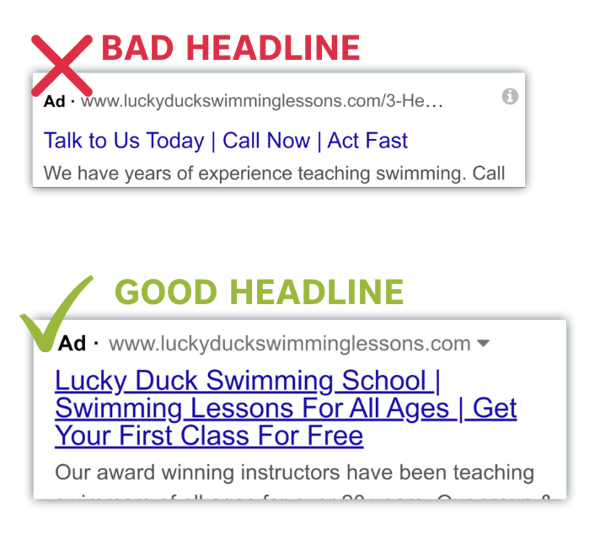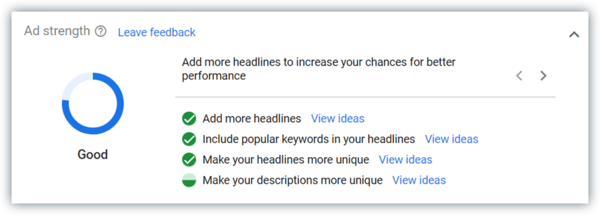New Research: Impact of Responsive Search Ads on PPC Performance
Like most PPC Professionals, I take pride in the many long hours and lessons learned I’ve acquired over several years of managing large PPC campaigns. It’s allowed me to understand how to formulate better strategies, build better campaigns, and gain better insights into performance. So when Google launched Responsive Search Ads, I was naturally resistant to giving up control of a key element of my success: building better ads. Why would I release that control to Google? Surely I know better what my clients’ audiences want to see and can build ads that engage them more meaningfully, right?
Well, I decided to put skepticism aside and get answers to those questions. Over the course of several months, my team at Service Direct began experimenting with RSAs. After some trial and error, we were able to perfect our use of RSAs and the results couldn’t have been any more surprising...
RSAs Increase Impressions by 243% & Increase Lead Conversion Rates by 5%
Because RSA combinations are engineered to match user queries, they open up the possibility that your ads will show up in front of users that you might not otherwise be able to reach. Upon examining the different combinations that Google was trying out, I found that their machine learning algorithm was trying out headline pairs that I never would have tried. That meant they were building a better organized message that in turn improved Ad Rank, resulting in a shocking 243% increase in impressions!
Given that massive increase in impressions, we assumed that the ads would be viewed to visitors that shouldn’t have seen them in the first place as they were probably not a good fit for our ads. Yet the ads yielded almost the same click through rate as our standard expanded text ads, dropping only 5%. Here it’s worth pointing out that some cynicism towards Google probably drove our initial assumptions. Besides, isn’t Google just trying to get more of our money by driving as many clicks as possible? If they were truly taking a shotgun approach to serving RSAs, it would be safe to assume that many of the ads would miss their mark, greatly reducing the click through rate. But even more importantly, of those that did click, we should have seen a decrease in the click to lead conversion rate. But what did we see? A 5% increase in click to lead conversion rate! That’s right, RSAs were not only viewed by almost 2.5X the number of visitors, but those that did click on our RSAs were 5% more likely to convert into a lead for our clients!
do responsive search ads work?
After relinquishing control of our ads’ organization to Google and analyzing the results, we were able to put aside our previous assumptions and think more critically about what happened and why.
Most notably, we believe that RSAs unlock a data point that only Google holds: insight into a specific searcher’s behavior and inclinations. In other words, Google spots trends in what resonates with a specific searcher and can architect an ad that speaks to them. For instance, if Google notices that a searcher is historically more inclined to click on ads that feature strong trust signals, then they’re more likely to serve an RSA highlighting multiple trust signals. Alternatively, another searcher may be more price-conscious, favoring ads that speak to affordable or upfront pricing. We couldn’t possibly know that information, and therefore might serve them an ad highlighting our client’s experience or other benefit that might not resonate with them, decreasing the likelihood they click on our ad and end up calling our client.
We also believe that the sheer number of possible ad combinations simply ensures that no matter what the searcher is looking for, RSAs have a much greater likelihood of building an ad that speaks to their needs. While we have become adept at building many different ads, the reality is RSAs allow you to construct almost infinite combinations.
Do’s and Don’ts
Don’t overemphasize the importance of CTR.
This is somewhat paradoxical in the PPC realm, as so many agencies are hyper-focused on increasing their CTRs, but the reality is that what happens post-click is more important than the click itself. the mutability of responsive ads makes them eligible to match with more searches, and that means that not every one of those opportunities has the same click-readiness. What our data makes clear is that the overall quality of the clicks that do happen is greater. Coupled with the much greater likelihood that your RSA ad will be shown, the increased conversion rate that these ads have outweighs the significance of a lower CTR.
Avoid Redundancy & Highlight Strengths
Responsive ads really only work well when they are created with the same kind of creative and strategic input as the traditional ad formats. Since any headline or description line created for the responsive ad can theoretically be paired with any other in the ad, you have to anticipate how a variety of juxtapositions could entice people who see your ads, and also work hard to prevent any one headline or description line from reading as redundant with another. For this reason, these ads pressure advertisers to make each and every unit say something bold and unique about their client or company and their product or service.
When working on headlines, sketch out what would be the best 30 character phrases pushing each of these selling points. Try to come up with two examples, and incorporate keywords when possible.
- What is the product or service?
- What are the benefits of your product or service?
- Who is your target audience?
- What branding terms can you use?
- Which calls to action best fit your landing page and marketing goals?
- Any unique options, prices, promotions or discounts?
Bad lists of headlines say the same thing over and over again, and thus yield combinations that can be downright confusing. A responsive ad from an especially bad set of headlines might look like this:

The problem here happens when an ad creator has loaded up their headline list with tons of calls to action that don’t tell users much about the services being advertised. Without anything unique in them referring to the service, they give searchers nothing to hold onto. With responsive ads, you have to be more variety, and also more strategic with calls to action. A better set of headlines might include a mix of branding information, clear information about the target audience, and a call to action that is more direct.
We can see here that the ad creator has created headlines that emphasize brand identity, the target audience, and a special deal. Likewise, they have included likely keywords while varying up synonyms like “school,” “lessons,” and “classes.”
Make independently powerful description lines
The same advice for headlines is also important for description lines. Give each description line a unique flavor, appealing to distinct facets of your product or service’s value, and write each one as if it could stand by itself as a coherent selling point. That way, if any two lines were to appear together, the ad would be strengthened and not weakened by the juxtaposition. If you think a particular pair of headlines would be redundant if they appeared next to one another, they probably are.

These description lines simply rehash the same selling points and calls to action over and over again. A better approach would be to highlight other facets of the services being offered in ways that reinforce one another.
Here, we can see that the combined description lines cover more overall selling points and provide a clearer picture of the services.
If you’re finding yourself stuck, try out Google’s responsive search ad creator beta in the Google Ads browser.

In addition to presenting a clean interface for ad creation, the tool provides a “score” for your ad, based on the uniqueness and relevancy of the ad content. Moreover, the tool can provide helpful content suggestions based upon site content and extant ad copy and extensions.
Once you have created an excellent ad, give it some time to perform in the wild, and check out which combinations are showing the most. If you find that there is a combination that works especially well, create a traditional ad that mimics that combination and add it to the AdGroup so that you can compare data for that specific ad against your next one.
Conclusion
If you find yourself on the fence with regards to whether or not to utilize RSAs in your PPC strategy, we hope sharing our experience helps you make the leap of faith. If done correctly, our results make clear that RSAs can significantly increase the likelihood your ads are seen by potential customers as well bring better visitors to your site that are more likely to purchase your services. By tapping into data only Google knows, RSAs unlock a personalization to ad messaging that increases the likelihood your ads speak directly to the Google searcher.

.png)
